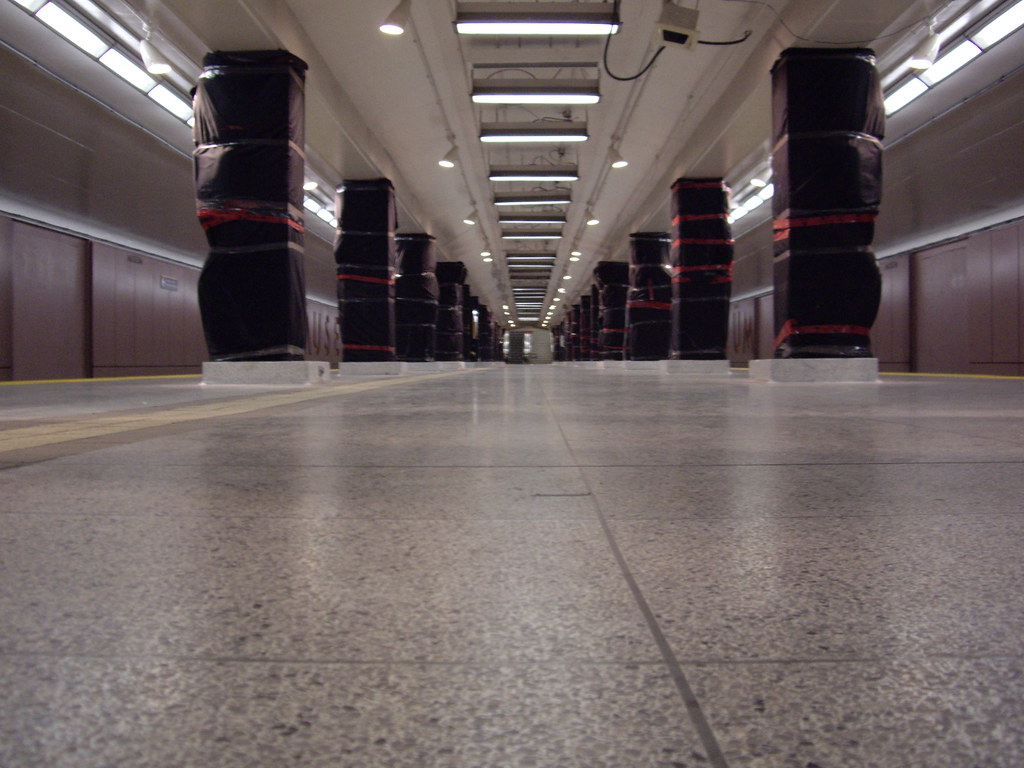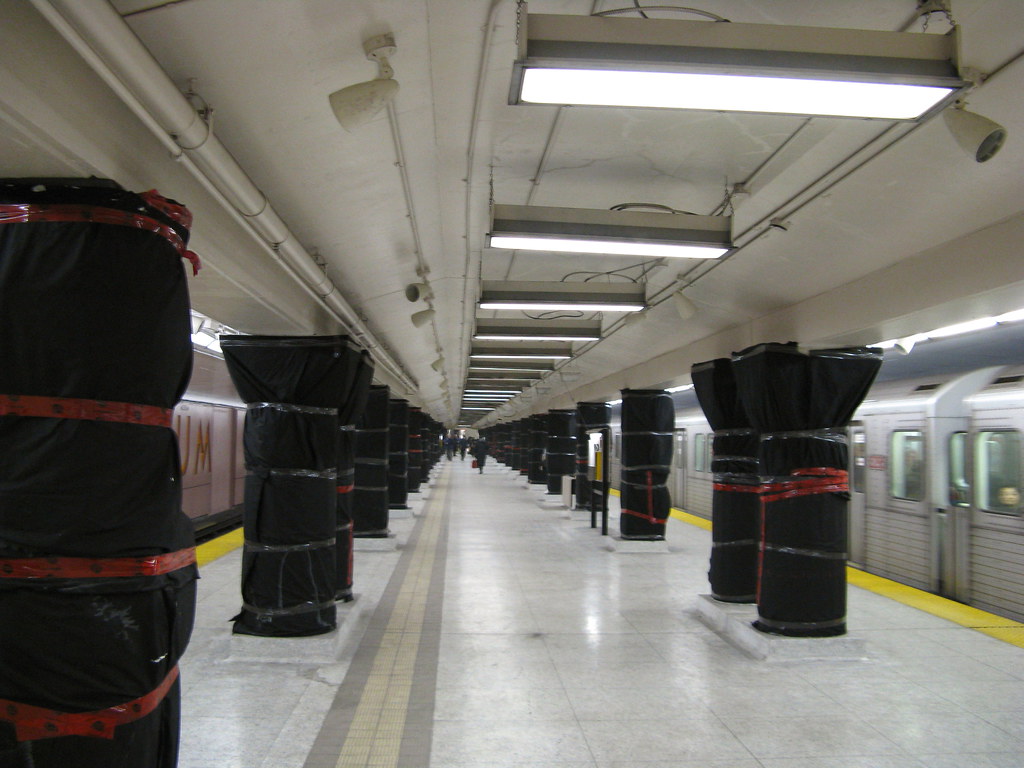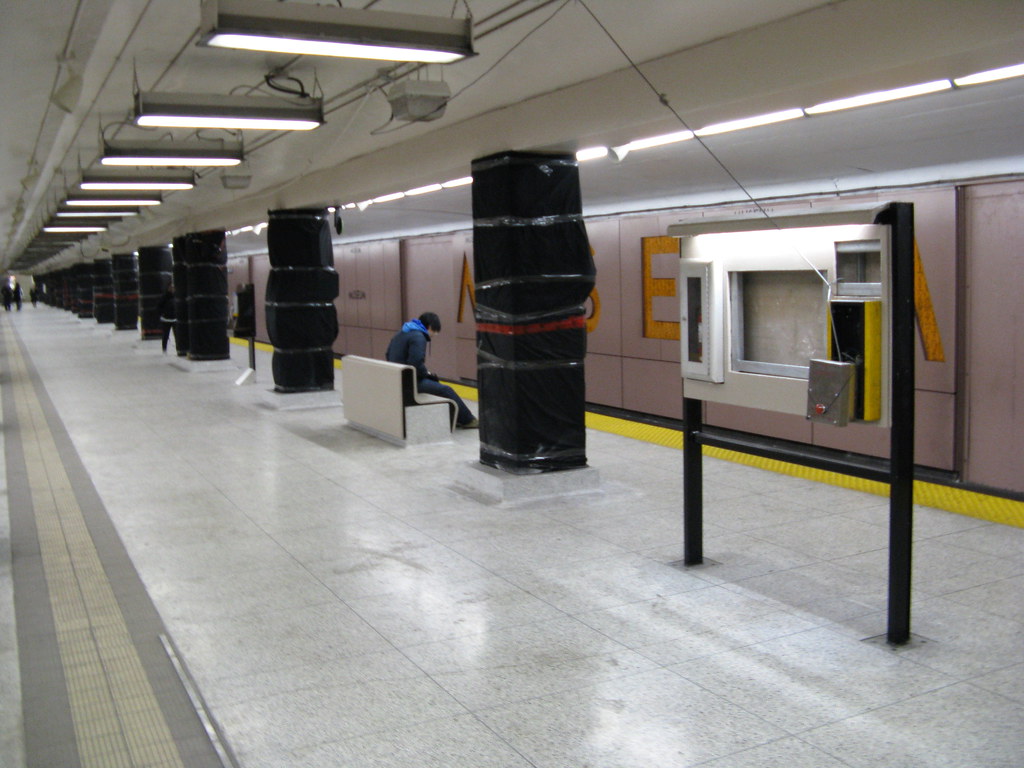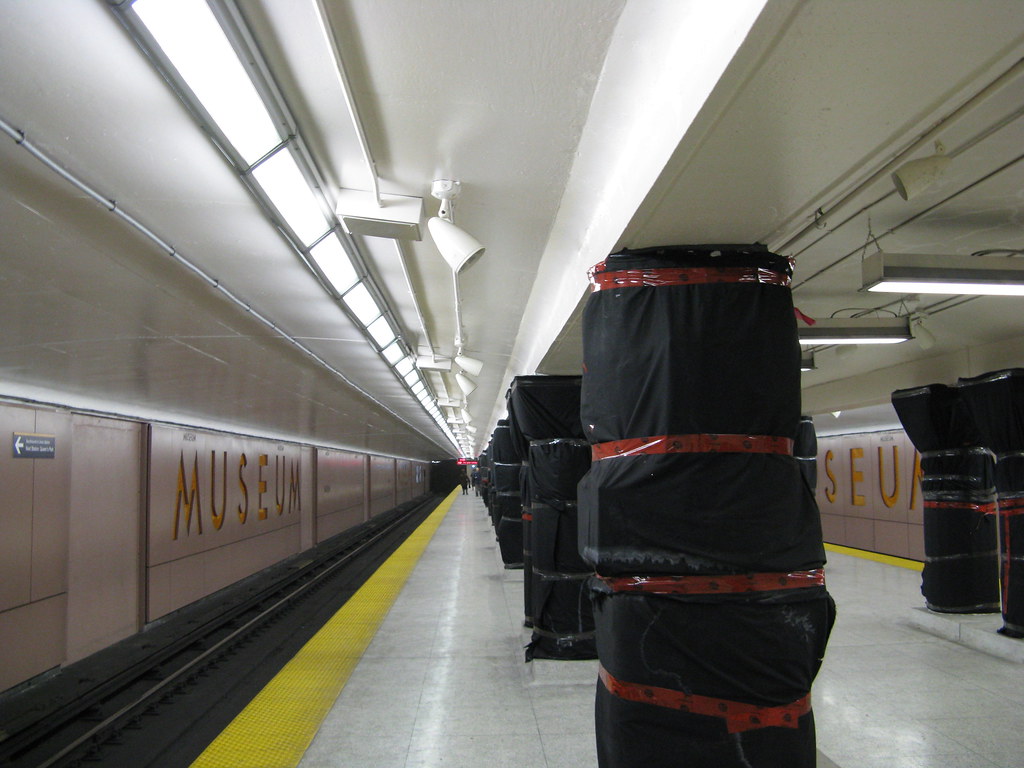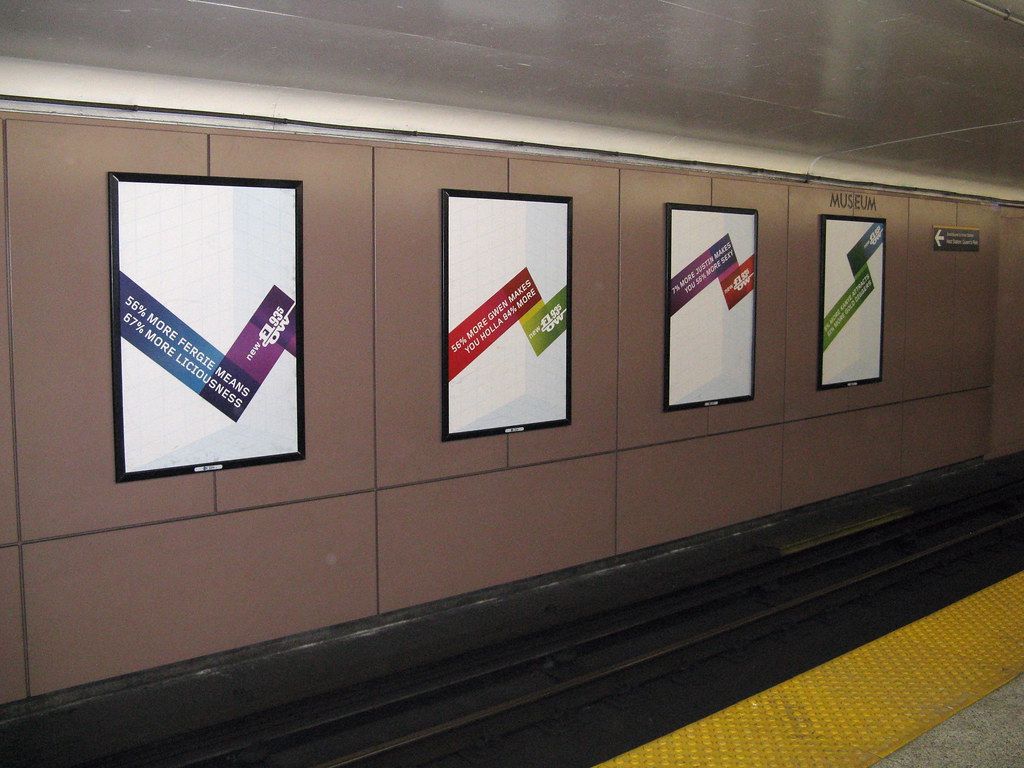This Globe article provides some interesting details on the construction and those involved. I must caution that the enthusiasm is infectious, even with the questionable design direction, the flaws and lack of new functionality.
Tomb raiders in the TTC
Soon to be unveiled, the retrofit at Museum station is driving commuters mad for a glimpse of what lies beneath the shrouds
JOHN LORINC
March 8, 2008
It's one of those projects that has been tough to keep under wraps, literally.
Subway riders have become increasingly nosy about what's going down in the Museum station, although they could be forgiven their curiosity.
Some have prised open cracks in the construction hoardings or tried to peel away the heavily taped black tarps sheathing the station's 46 columns. Late at night, a few regular riders quizzed the workmen about their progress. One recent evening, some enthusiastic tourists from New York City even snapped photos of one another posing next to the bulky pillars with their strange protuberances.
"People have been grabbing and taking the cloth apart, just so they can get a glimpse," mused Damiano Petrozza, a soft-spoken contractor who owns Jeviso Construction, the Vaughan firm whose crews have been toiling through the wee hours on a high-profile project designed to transform the eponymous station into something of a calling card for the newly refurbished cultural institution up above.
The refurb has cost $5-million, with the necessary funds already raised from the Toronto Transit Commission, the Ontario government and private donors. Toronto Community Foundation chief executive Rahul Bhardwaj says his group is exploring the possibility of makeovers for Osgoode and St. Patrick, thematically linking the stations with three nearby cultural institutions: the Four Seasons Centre for the Performing Arts, the Art Gallery of Ontario and the Ontario College of Art & Design. "That's the raison d'être of the whole initiative," Mr. Bhardwaj says.
The project, first bruited in the summer of 2005, was to be unveiled last Christmas, but the launch has been moved to April 8. While the TCF is keeping the ultimate product secret, Mr. Petrozza dropped by the station this week to describe a finicky, exhausting but highly rewarding task that is quite unlike anything his general contracting firm has ever taken on.
The bulk of the work was done each night between 7 p.m. and 5 a.m., but the crews rebuilding the wall panels had to wait until about 2:30 a.m., when the TTC stopped using the tracks and the power could be shut off.
"You go like hell for about two, 2½ hours," said site supervisor Tim Uptegrove, who virtually lived down in the station for the duration. "By 5 a.m., you have to be cleaning up."
The first job was to smash up all the old yellow tiles and haul out the debris by hand, up two flights of stairs to a dumpster waiting on University Avenue.
Mr. Petrozza's crew then spent four gruelling months drilling 10,000 holes in the concrete walls, in which they inserted epoxy glue and foot-long "fasteners." These bolts must support the 420 new clay-coloured panels, including those with the giant floating orange letters spelling the word "Museum" that are adorned by hieroglyphics.
Meanwhile, on the platform, the contractors walled off the columns, eight at a time, and then stripped them back to the 50-year-old steel beams that keep the ceiling up. "They are extremely well built," Mr. Petrozza observed. "That's one thing I have to say about the TTC: When they did something, they did it well."
After the exposed girders were coated in fire-resistant foam, it was time for the main event: The installation of the handmade mouldings meant to evoke artifacts from the Royal Ontario Museum's extensive antiquities collections.
"The process was a lot less high-tech than you might imagine," said intern Jessica Waese, at Diamond + Schmitt Architects, the firm responsible for the redesign. Four artisans from Oakville's Design Plaster Moulding began by carving sculptures into pillars of rigid foam, using images and input from ROM curators.
These were refined several times to produce the final moulds, which were used to create the actual castings out of a shock- and graffiti-resistant substance called "glass fibre cement compound."
Ms. Waese, who oversaw the painstaking task, was told by TTC engineers that the compound had to be absolutely abuse-proof and would be tested by TTC personnel wielding hockey sticks and mallets before being approved for use on the platform.
Each column is made of two 110-kilogram castings that have been proportioned to fit snugly around the coated girders. Mr. Petrozza says the 92 column halves, each 2.4 metres long, had to be gingerly carried down to the platform by teams of six men.
Skilled tile-layers prepared the base of each column by fashioning square, tapered pedestals from terrazzo, a floor covering made from crushed marble and cement. The crews then hoisted the castings onto the pedestals, positioned them carefully and glued the halves together using fast-setting epoxy applied to plates on the insides of each. The workers had less than half an hour to get the pieces in place. "They had to be really accurate about what they were doing," he said. "It's a glue that will stay there forever." Every one of the station's 46 columns took about two days to complete.
With only a few electrical odds-and-ends left to finish before the launch, Mr. Petrazzo is clearly proud, and seems keen to take on another station, should the opportunity arise. "Not just for the prestige," he added, "but for the work itself. You're not only doing it for yourself. You're doing it to beautify a part of Toronto."
The motivating force
The Toronto Community Foundation, which put in $1-million to the Museum station project and helped find further donors, is a registered charity that was established in 1981. The foundation's mission is to connect philanthropy to community needs and opportunities.
The foundation has an endowment upwards of $195-million to sustain charitable organizations in Toronto and the surrounding area.
The foundation's chief executive officer is Rahul Bhardwaj. A former Bay Street lawyer, he was vice-president of Toronto's 2008 Olympic bid.
The foundation's chair is Martin Connell, co-owner of Ace Bakery.







